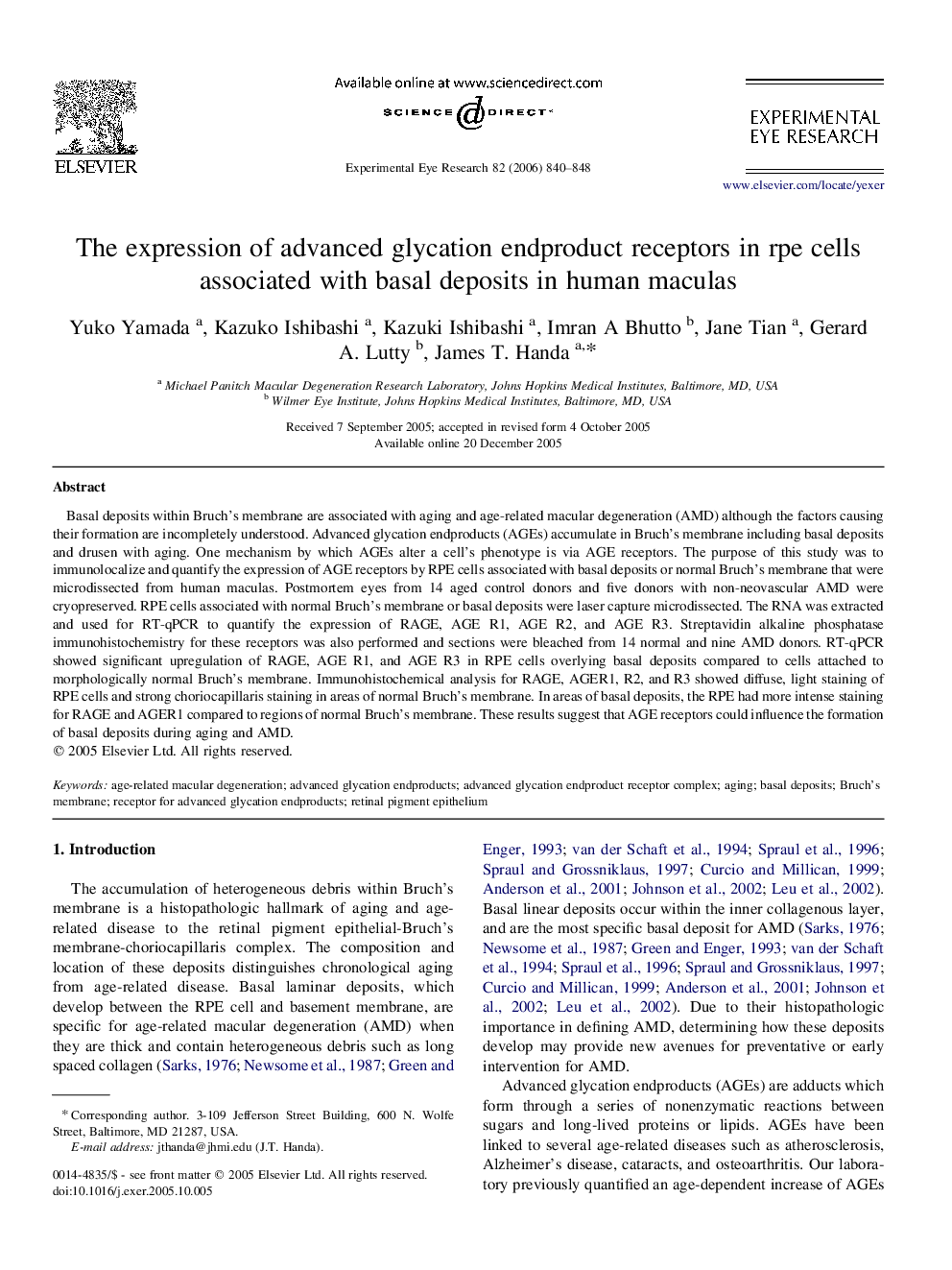| Article ID | Journal | Published Year | Pages | File Type |
|---|---|---|---|---|
| 4013056 | Experimental Eye Research | 2006 | 9 Pages |
Basal deposits within Bruch's membrane are associated with aging and age-related macular degeneration (AMD) although the factors causing their formation are incompletely understood. Advanced glycation endproducts (AGEs) accumulate in Bruch's membrane including basal deposits and drusen with aging. One mechanism by which AGEs alter a cell's phenotype is via AGE receptors. The purpose of this study was to immunolocalize and quantify the expression of AGE receptors by RPE cells associated with basal deposits or normal Bruch's membrane that were microdissected from human maculas. Postmortem eyes from 14 aged control donors and five donors with non-neovascular AMD were cryopreserved. RPE cells associated with normal Bruch's membrane or basal deposits were laser capture microdissected. The RNA was extracted and used for RT-qPCR to quantify the expression of RAGE, AGE R1, AGE R2, and AGE R3. Streptavidin alkaline phosphatase immunohistochemistry for these receptors was also performed and sections were bleached from 14 normal and nine AMD donors. RT-qPCR showed significant upregulation of RAGE, AGE R1, and AGE R3 in RPE cells overlying basal deposits compared to cells attached to morphologically normal Bruch's membrane. Immunohistochemical analysis for RAGE, AGER1, R2, and R3 showed diffuse, light staining of RPE cells and strong choriocapillaris staining in areas of normal Bruch's membrane. In areas of basal deposits, the RPE had more intense staining for RAGE and AGER1 compared to regions of normal Bruch's membrane. These results suggest that AGE receptors could influence the formation of basal deposits during aging and AMD.
